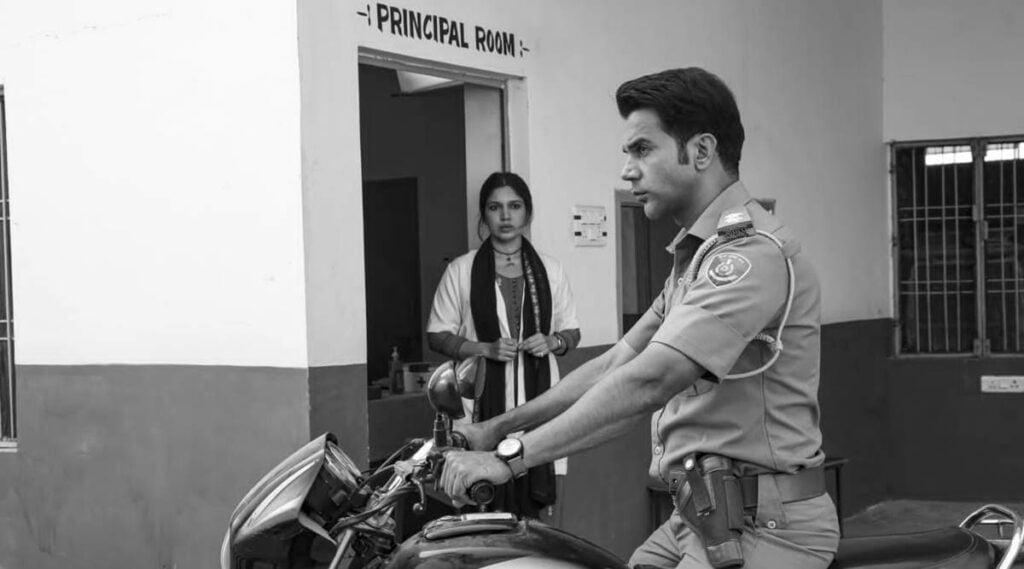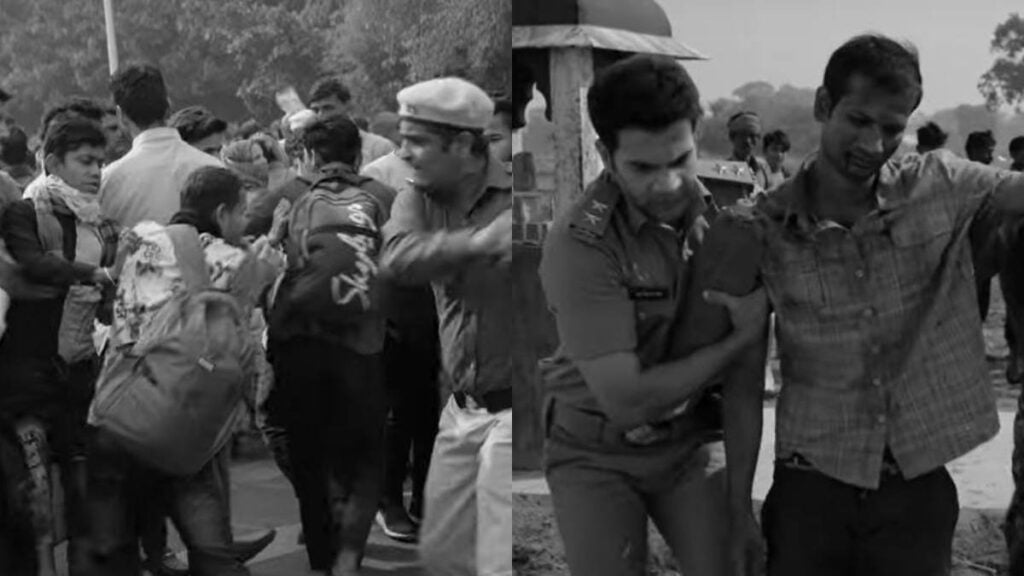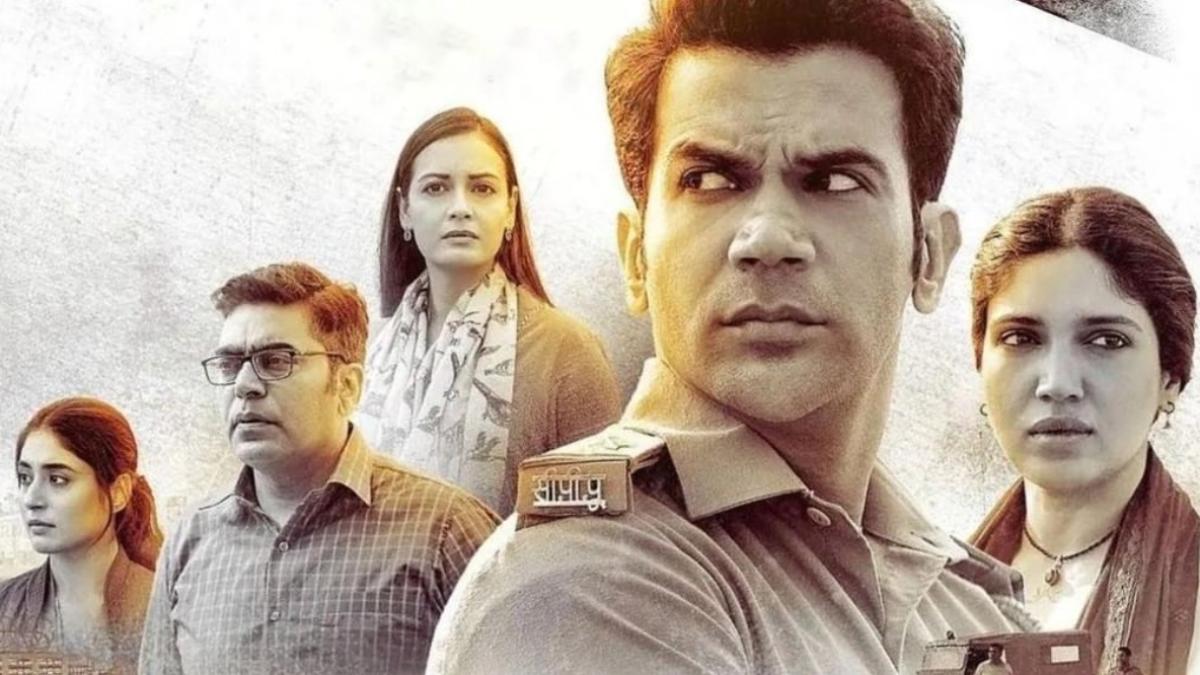Anubhav Sinha’s latest movie Bheed, attempts to trace what has been controversially termed as the largest mass migration in India after the partition in 1947. Despite being supported by powerful performances from Rajkummar Rao, Pankaj Kapur, Dia Mirza, and Bhumi Pednekar among others, it loses the track of the very ideas it situated itself in the beginning or through the trailer of the movie.
The specific scenes and words that were omitted include deleting cuss words, reducing intimate scenes, removal of phrases like Hinduon Ki Kabre, reducing the mention of Talibaghi Jamaat, removal of caste references from subtitles, muting the word jihad from the phrase corona jihad, reducing visuals of police brutality, entirely removed the speech made by the Prime Minister about the lockdown, and lastly, removal of statistics that discussed the extent of the pandemic and the ensuing lockdown.
It is uncertain if it is the movie’s doing or if it’s a result of massive cuts that were ordered by the Central Board of Film Certification (CBFC).
Caste-class divide as the fulcrum
The film deals with the caste-class divide in multiple ways. One of the highlights is how both covid and caste-based discrimination are centred around a sense of untouchability, albeit for different reasons. The other point of the class divide in interesting ways is the premise of an almost dystopian survival movie situated around a mall. Dia Mirza’s character (Geetanjali) felt very unnecessary as its sole purpose was to provide a standard for comparison.
Although it led to some crucial conversations like a pretty affluent woman foolishly declaring that poor people have higher immunity, otherwise they would also complain of migraines and other health issues all the time even though the person driving her car tells her repeatedly that they’re used to it because there’s no other option.
Bheed captures the panic of when life, as we know, was brought to a standstill and the state borders were closed. Through different ways, it points to the prevalent themes at the time, be it the fake news through WhatsApp/Facebook, no clarity if masks work or not, symptoms of alcohol withdrawal, ethics of journalism, menstrual hygiene for women and the panic induced around a disease which had a new symptom every day.
Bheed captures the panic of when life, as we know, was brought to a standstill and the state borders were closed. Through different ways, it points to the prevalent themes at the time, be it the fake news through WhatsApp/Facebook, no clarity if masks work or not, symptoms of alcohol withdrawal, ethics of journalism, menstrual hygiene for women and the panic induced around a disease which had a new symptom every day.
Also Read: Netflix’s Class Is All About Sex, Money And Privilege
Another imagery used is through the plot of a young girl carrying her father on a bicycle, explored as a story of resilience even though it was a result of systemic failure. The movie reaches its highest point towards its end, at a standoff hinging on the question of life and death, but we don’t get any clear answer. Abiding by the law to protect the interest of the capitalists or those who misuse their power in favour of corruption are the disheartening solutions provided in the name of justice.
The Centre already stated that they do not have any data available on the migrant workers who died during the pandemic. So it was already a difficult task to document or represent in some form, the stories that are a result of failure on the part of the state and which the state is profusely refusing to indulge in. When the trailer of the movie was released, it was soon made private after being wrongly criticised for being “agenda-driven” while it was merely looking at the reality of the lockdown.
I was shocked to see people laughing in the theatre at the scene where the migrants are sprayed with sanitiser. These unfortunate events along with the likes of police making the migrants do uthak baithak, the incidents of people dying while on the way to their hometown could have been handled better, rather than being geared towards mere optics.

Most of us relate the experiences of death and grief with the pandemic and the lockdown. Bheed engages with the idea of grief interspersed with narratives of caste, gender, and class, all of which are half-baked. The aspect of death remains largely untouched other than in the opening scene of the movie, and the end credits which discuss news headlines. For a pandemic that saw the death of 4 million people in India as per a study, the movie doesn’t do justice.
Censorship issues
The Centre already stated that they do not have any data available on the migrant workers who died during the pandemic. So it was already a difficult task to document or represent in some form, the stories that are a result of failure on the part of the state and which the state is profusely refusing to indulge in. When the trailer of the movie was released, it was soon made private after being wrongly criticised for being “agenda-driven” while it was merely looking at the reality of the lockdown.
The initial trailer started with the speech of the Prime Minister and that part was removed, and so was the comparison of mass migration to India’s partition of 1947 (although it’s a different issue that the film fails to substantiate the merit it sets with this analogy).
Even with its flaws, Bheed is a rare offering from Bollywood. It does work as a stark reminder of the tragedy we collectively suffered in the past three years, though those who were privileged on account of caste and class did escape the worst.
The specific scenes and words that were omitted include deleting cuss words, reducing intimate scenes, removal of phrases like Hinduon Ki Kabre, reducing the mention of Talibaghi Jamaat, removal of caste references from subtitles, muting the word jihad from the phrase corona jihad, reducing visuals of police brutality, entirely removed the speech made by the Prime Minister about the lockdown, and lastly, removal of statistics that discussed the extent of the pandemic and the ensuing lockdown.

The cuts suggested by CBFC reduced the credibility and Sinha’s familiar tone centred around saviour and hope (the former of which was the biggest issue with Article 15 as well) is unjust, as the film delves into one of the darkest chapters in the history of mankind.
Even with its flaws, Bheed is a rare offering from Bollywood. It does work as a stark reminder of the tragedy we collectively suffered in the past three years, though those who were privileged on account of caste and class did escape the worst.
Also Read: Joyland: A Love Letter To Pakistan, Its Culture, Food, Fashion And, Most Of All, Its People
The glaring failure of Bheed lies in the inability to engage without holding anything back. While it is successful in encompassing some reality of the pandemic and of the Indian society as such, it doesn’t quite cover the lived experiences of those who suffered the worst in the lockdown. On one hand, it deftly portrays the narratives that we are all familiar with and don’t want to go through again. On the other hand, Bheed doesn’t utilise cinema as a medium to further engage with these narratives in different ways, exposing the relations of power and privilege that are rooted deep in our society and system.




